

Pe-2
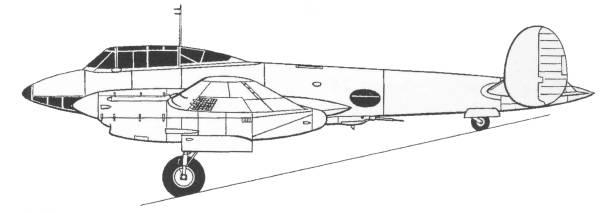
The Kit
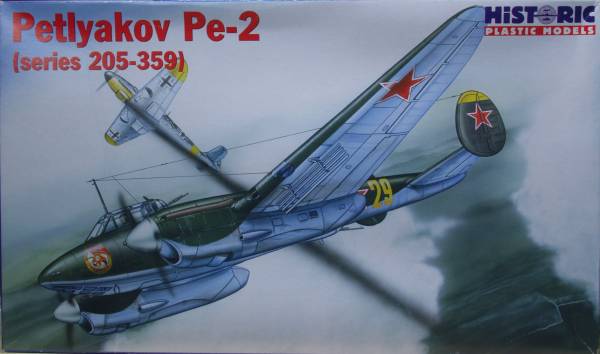
is a short run kit. The kit comes in a thin cardboard two part box. The parts are bagged in one large bag with the exception of the clear parts which were in a separate bag along with the decals, photoetch fret and clear film for the instrument panel. A few parts had abrasion marks from shipping but nothing that would cause any problems. The kit is typical for short run kits in that it has no alignment pins. Some folks seem to have a problem with this but I tend to find that in many cases it actually makes assembly easier.
The large pieces are reasonably flash free with very nice finely rendered recessed panel lines and detail with a couple raised details where applicable. The surface finish is smooth for the most part. There were a couple small distortion marks on one fuselage half that appeared to be opposite from the ejector pin marks on the inside. A couple parts had a few small trash globs on them but they were very small and you really had to search to find them. One thing I found that I don't think I have ever seen on injection molded parts was what appeared to be small air bubbles like ones seen on resin parts. These seem to be most numerous on the lower wing center section but I found a few on other parts as well. They were all quite small and shouldn't be hard to fix.
There are ejector pin marks in the cockpit area that most likely will show if not filled and sanded but most of the others were in places they would not show and the small parts were for the most part free of them. All of the small parts did have some parting line flash that will need to be cleaned up. I only found a couple sink marks on the rear of the engine nacelles that will need to be filled. The fabric detail on the control surfaces was very nicely done and over all I was pleased with the surface finish and detail which was better than many other short run kits I have seen. My only complaint was that the lines around the control surfaces could have been a bit more pronounced but it's always easier to make them deeper. There are eight sprues of gray parts for a total of 215 parts and one sprue of clear parts with 10 parts on it for a total 225 plastic parts. See the photos below of the sprues. There are two identical sprues with the props and engine parts so only one is shown.
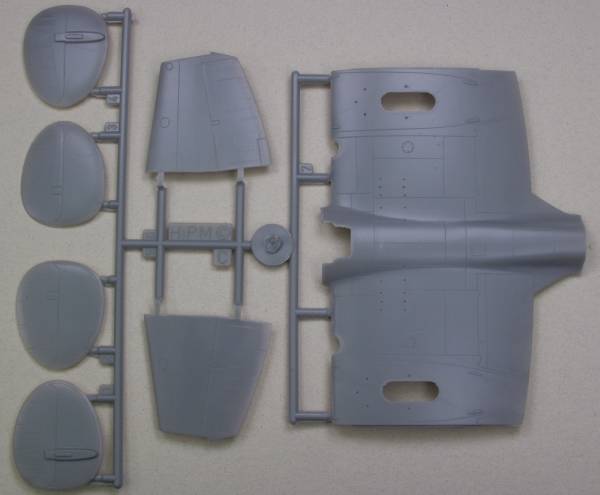
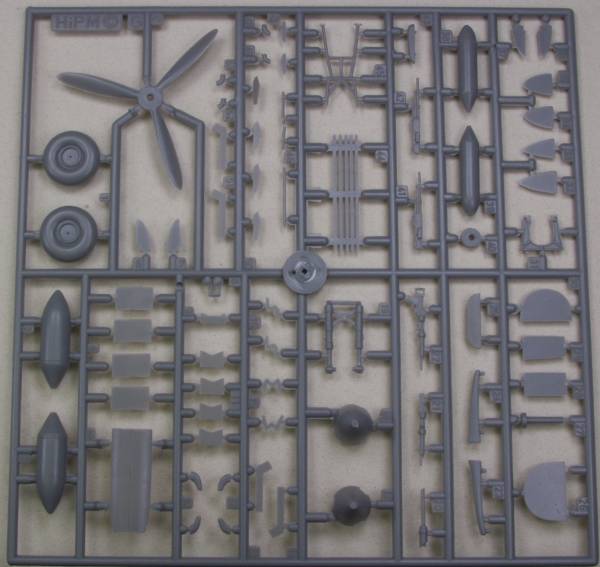

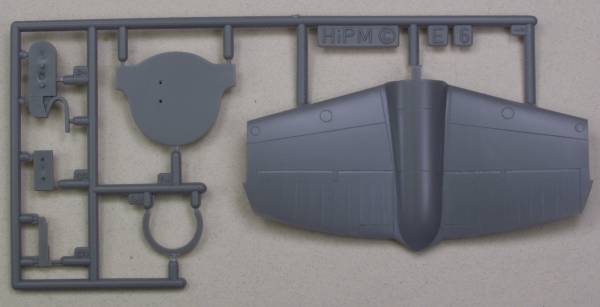
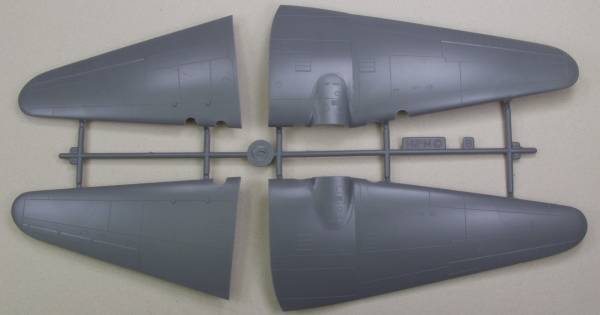



The canopy is injection molded, thin and clear with good demarcations for the canopy frame lines, some of the other clear parts were not as clear but should look OK once dipped in Future. See photo below.
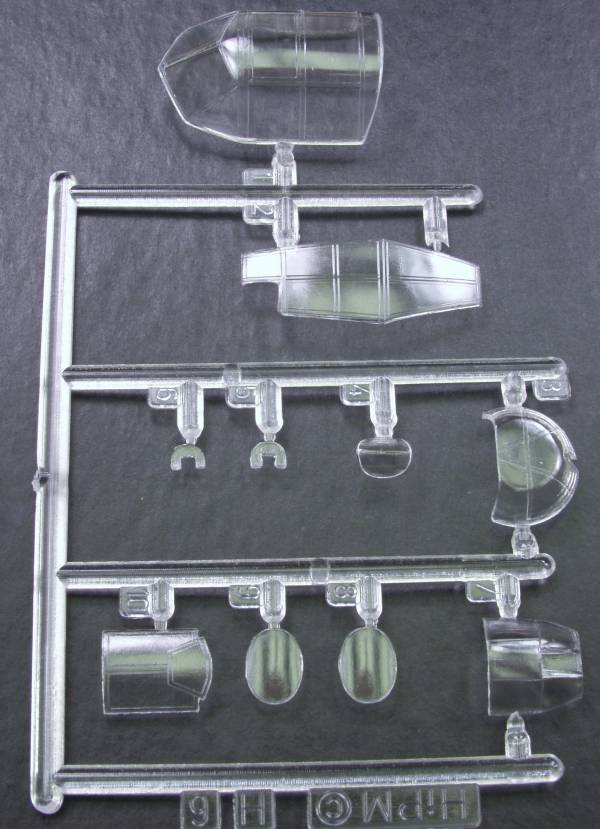
The kit also includes a fret of photoetch which includes control panels, seat belts and harnesses, bezels for side consoles and radios, gun sights for the guns, straps for the rudder pedals, some cockpit structural parts, an inside overlay for the entry hatch and alternative dive brakes. The latter can be used in place of the supplied plastic parts. A piece of clear film is provided for the instrument faces, See below.
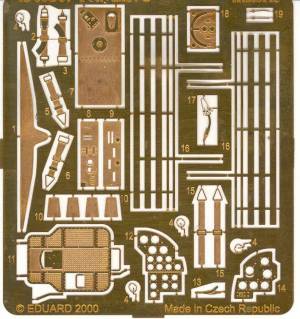
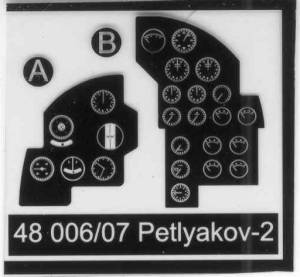
There are 28 photoetch parts plus the film for a grand total of 254 parts. The cockpit area is very nicely done with lots of parts both plastic and PE. The hand operated machine guns are nicely molded with separate ammo magazines, collection bags and PE sights. The landing gear assemblies are very detailed, the gear wells get boxed in with bulkheads but there is no wheel well structural detail provided. The engines have separately molded exhaust stacks and air scoops and the prop shaft is glued in place when assembling the engines nacells, allowing the props to be added later as they have a retainer that glues onto the end of the prop shaft. The kit supplies two different sized bombs that can be carried externally. There are two different prop spinners supplied but only one is mentioned in the instructions and I suspect the extra set is for an earlier version that was also available at one time.
The decals look thin and well registered and have only a limited amount of excess clear film. The sheet includes markings for five aircraft, one Czech, three Russian and one Yugoslavian and are printed by Propagteam, see photo below.
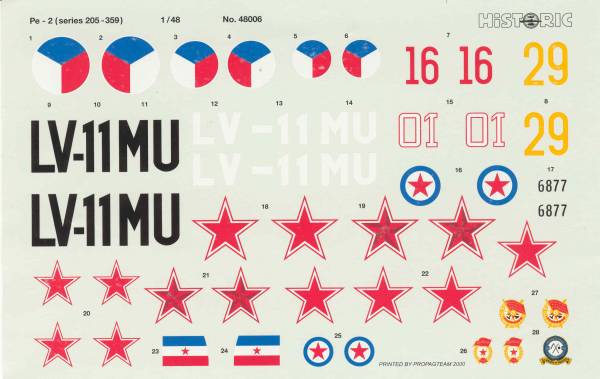
The instructions are eight A4 size sheets printed on both sides folded and stapled to make a 32 page booklet. The first two pages have history and specifications in English and Czech, the next two have sprue maps but they really aren't necessary as the sprues and part locations have the numbers molded in to them. There are five pages of interior detail assembly plus nine more for assmbling the balance of the kit. There are three pages of color callouts for all the detail assemblies and ten pages detailing the decal and exterior paint schemes. Paint colors are called out by color name only. The last page is a catalog of other kits. Unless there are some errors in their procedures the instructions are very detailed for a limited run kit.
After Market Goodies
This kit is pretty well loaded so the only thing I went for was a set of Black Magic masks [CEBM48517]
Conclusions
This seems to be a very nicely detailed kit, one not really requiring any aftermarket items unless you want to use markings other than those supplied with the kit. The cockpit should be a real beauty when complete. I'm certain, as with most short run kits, there will be fit issues and cleaning up the flash on the small parts will take some time but that goes with the territory. I was impressed by the surface finish and detail and would recommend it to anyone who has built a few limited run kits.
Links to kit build or reviews
None found for this kit
References
The Osprey Encyclopedia of Russian Aircraft by Bill Gunston
Profile Publications No. 216 Petlyakov Pe-2 and Variants by Malcom Passingham and Waclaw Klepacki
Petlyakov Pe-2 in Action by Hans-Heiri Stapher
Back to the Russians are Coming
Updated 2/22/08